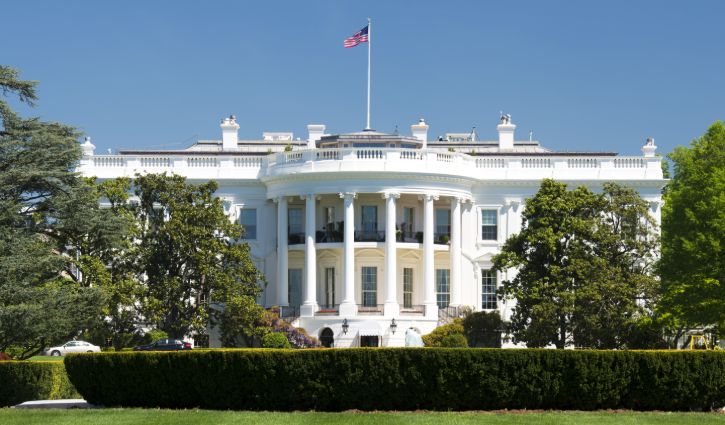President Joe Biden’s administration is continuing its efforts to curb the COVID-19 pandemic and the spread of the deadly coronavirus Delta variant. Recently, the White House ordered all federal workers and contractors to get vaccinated against COVID-19. Now, the government is imposing a similar requirement on private employers. The move is estimated to affect over 80 million private-sector workers.
The Occupational Safety and Health Administration (OSHA) has been tasked with drafting an emergency temporary standard (ETS) and will announce more specifics in the coming weeks. Soon, employers with 100 or more employees will need to adapt their vaccine policies to comply with these new rules.
This article discusses this latest vaccination mandate, including its scope and how it may affect employers.
Note: This is a developing issue. Information will be updated here and in subsequent resources as more details are released.
Rule Overview
Soon, employers with 100 or more employees (measured companywide, not by location) will need to enforce one of the following:
- Require employees to get vaccinated against COVID-19
- Require unvaccinated employees to produce evidence of a negative COVID-19 test each week
This flexibility allows employers to choose how strictly they want to enforce a vaccine mandate. In other words, some employers may decide to make vaccination a condition of employment; others may only require negative COVID-19 tests.
What’s Known About the Upcoming Rule
OSHA is tasked with drafting the new rule. As such, there will be few details available before OSHA publishes a definitive ETS. Meanwhile, the only pertinent information has come from short government briefings.
Here’s what’s known about the upcoming rule, keeping in mind these particulars may change in time:
- The rule will only apply to employers with 100 or more employees, measured companywide.
- Employers will be able to decide if they want to adopt a strict, mandatory vaccination policy or allow testing as an alternative.
- Employers must provide paid leave to receive and recover from vaccinations.
- Remote employees not working in contact with others will be exempt from the ETS (unless they come into the workplace).
[display_mode mode=”non-member-only”]Members login to access full article[/display_mode]
[display_mode mode=”member-only”]Again, all aspects of this upcoming rule are subject to modification as OSHA continues to work on the details. The above information is provided to help employers understand how the government is proceeding in this area.
What’s Unknown About the Upcoming Rule
Much is still unknown about the upcoming vaccine requirement, and it will remain as such until OSHA publishes the ETS. Here are just some of the questions that remain to be answered:
- When will the ETS begin being enforced?
- What qualifies as proof of vaccination or a negative COVID-19 test?
- Who must pay for weekly testing?
- What specific penalties will there be for noncompliance?
- Will the mandates apply to part-time workers?
- Will there be new guidance on how employers should handle accommodations for employees seeking an exemption?
- Must paid leave be provided for employees’ COVID19 testing, as it is for vaccinations?
As the list illustrates, there are many unknown factors at this time. Employers will need to stay tuned for updates from OSHA as they come; however, that employers can take action in the meantime.
Expected Enforcement Timetable
The vaccination mandate will come in two primary waves:
- An ETS with comprehensive details and actionable steps
- A permanent OSHA standard with all aspects fleshed out
First, OSHA will publish its ETS that will include important details and enforcement guidelines. This is expected to come in the weeks ahead; however, an actual release date is uncertain. Once issued, the ETS will take immediate effect in states where federal OSHA has jurisdiction. In states where the federal government does not have jurisdiction over workplace safety, state agencies will have to either adopt the ETS or develop their own ETS within 30 days that is “at least as effective.”
An ETS can only remain in effect for six months. After that time, it must be replaced by a permanent standard, which must undergo a formal rule-making process involving a notice-and-comment period to allow stakeholders to submit feedback. This process follows the usual procedure for adopting a permanent standard except that a final ruling should be made within six months from that date OSHA publishes the ETS in the Federal Register.
In summation, employers can expect the ETS sometime within the year, but its specifics may ultimately change as the standard is finalized.
What Employers Can Do Now
While many details are still unknown, the primary vaccination or testing requirement is definite. As such, employers can at least prepare for this aspect of the mandate. Here are some actions employers can consider when preparing for the upcoming requirement:
- Determine whether COVID-19 vaccination will be required as a condition of employment or if weekly negative testing will be an alternative.
- Consider how to handle accommodation requests for those seeking vaccination exemptions.
- Start planning an employee communication campaign to educate workers about vaccine policy changes.
- Think about the systems needed to adequately track employee vaccination statuses and confidentially secure the data.
- Plan for potential staffing shortages or scheduling changes to afford employees time to get vaccinated.
- Consider whether partitions or spaced-out workstations will be utilized
This list is nonexhaustive, as certain considerations will be unique to individual employers.
Though the ETS will almost certainly face multiple legal challenges, employers should not count on the rule being entirely struck down and should begin preparing to comply as soon as possible.
Conclusion
The specifics of this latest vaccine mandate are still being drafted, so its rules may seem like a distant concern; however, these requirements will take effect quickly once they’re announced. Employers will need to act swiftly when the time comes to ensure compliance. Taking proactive steps now can help save employers from a scramble at the end of the year.
Stay tuned for updates as this situation develops.
Download PDF [/display_mode]












